Essential Oils Aromatherapy for Menstrual Pain Relief: Complete Guide
Article Summary
Authoritative professional guide to essential oils for menstrual pain relief, detailing the scientific benefits, usage methods, and safety guidelines for six core essential oils: lavender, cinnamon, rose, marjoram, ginger, and Roman chamomile. Based on latest scientific research, providing safe and effective natural menstrual pain relief solutions.
PeriodHub Team
Health Expert
Essential Oils Aromatherapy for Menstrual Pain Relief: Complete Guide
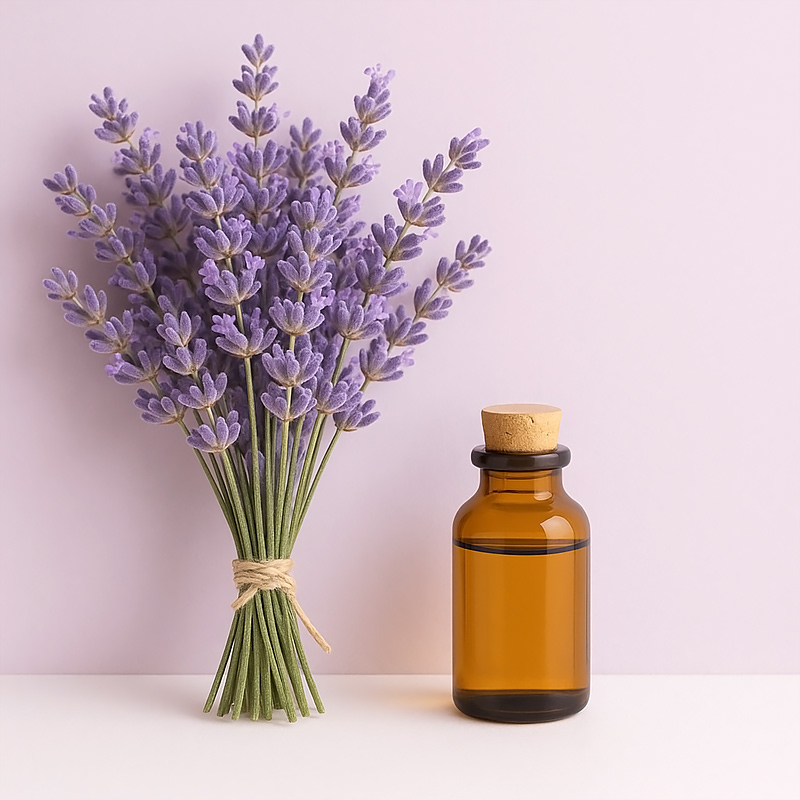
Introduction
Menstrual pain (medical term: Dysmenorrhea) is a common problem affecting women of reproductive age worldwide. According to World Health Organization (WHO) data, approximately 45%-95% of women of reproductive age experience varying degrees of menstrual pain. The pain ranges from mild mood effects to severe disruption of daily work, study, and life. Faced with monthly recurring pain, besides medication, more and more women are seeking natural, complementary relief methods. Among these, essential oil aromatherapy has gained attention for its unique fragrances and potential physiological benefits.
Physiological Mechanism of Menstrual Pain
The primary physiological mechanism of menstrual pain is related to excessive release of prostaglandins from the endometrium during menstruation. Particularly prostaglandin F2α (PGF2α), which causes strong uterine smooth muscle contractions and vascular spasms, leading to local uterine ischemia and hypoxia, resulting in spasmodic or dull pain. High levels of prostaglandins may also stimulate gastrointestinal smooth muscle, causing accompanying symptoms such as nausea, vomiting, and diarrhea.
Scientific Principles of Essential Oil Aromatherapy
The scientific principles behind essential oil aromatherapy for menstrual pain relief are multifaceted:
- Nervous System Regulation: Essential oil fragrances are transmitted through olfactory nerves to the brain's limbic system, affecting emotions and stress perception, potentially promoting the release of endogenous analgesic substances like endorphins.
- Anti-inflammatory Action: Some essential oils contain components that can inhibit prostaglandin synthesis or reduce inflammatory responses.
- Antispasmodic Action: Certain essential oils can relax uterine smooth muscle, alleviating uterine spasms.
- Improved Blood Circulation: Massage combined with essential oils can promote pelvic blood circulation, relieving uterine ischemia.
Six Core Essential Oils Detailed
1. Lavender Essential Oil

Main Benefits: Analgesic, sedative, antispasmodic, mood improvement.
Applicable Symptoms: Lower abdominal spasmodic pain, menstrual pain accompanied by anxiety, tension, or insomnia.
Scientific Evidence:
- Multiple randomized controlled trials (RCTs) and meta-analyses confirm that lavender essential oil (through inhalation or abdominal massage mixed with carrier oil) can significantly reduce the pain intensity and duration of primary dysmenorrhea.
- A 2016 study published in "Annals of Medical and Health Sciences Research" found that lavender inhalation therapy effectively reduces menstrual pain, with effects lasting several months.
- A 2021 meta-analysis indicated that lavender essential oil is effective when used alone, with enhanced effects when combined with massage.
- Its mechanism may involve nervous system regulation, reduction of uterine smooth muscle contractions, and potential anti-inflammatory action.
Detailed Usage Methods:
- Abdominal Massage: Add 2-3 drops of lavender essential oil to 15ml of carrier oil (sweet almond oil or jojoba oil), mix well. Start 1-2 days before menstruation or at pain onset, gently massage lower abdomen and sacral area for 5-10 minutes each time.
- Hot Compress: Add 2 drops of lavender essential oil to hot water (40-45°C), soak towel, wring out, and apply to lower abdomen or waist for 15-20 minutes each time.
- Aromatic Diffusion: Add 3-5 drops of lavender essential oil to an aromatherapy machine or diffuser, inhale to help relax body and mind, relieve emotions and pain.
- Aromatic Bath: Add 5-8 drops of lavender essential oil mixed with carrier oil (such as 1 tablespoon milk or base oil) to warm bath water, soak for 15-20 minutes.
2. Cinnamon Essential Oil
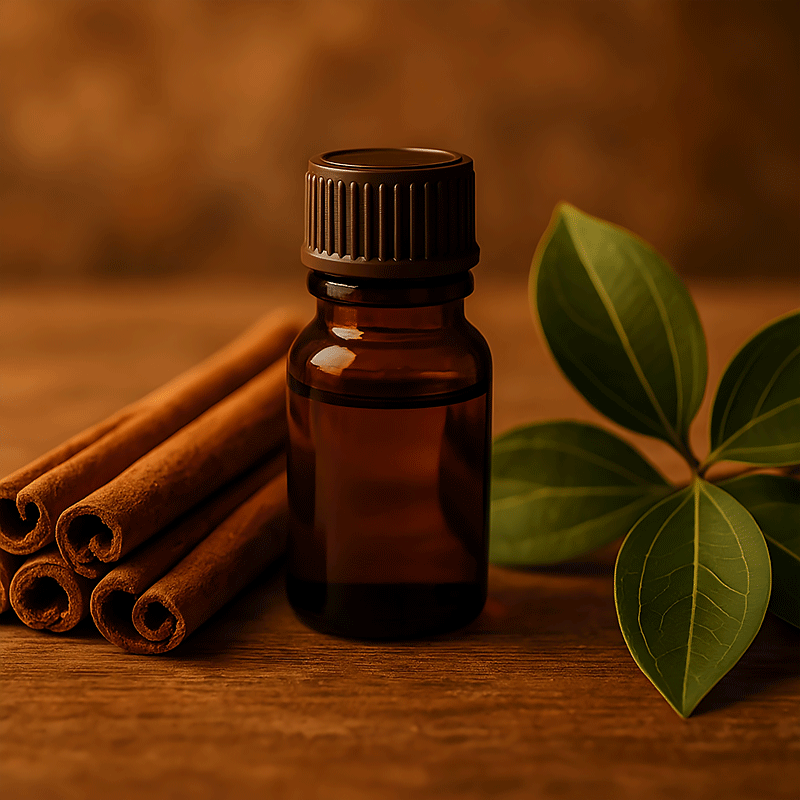
Main Benefits: Warming, promotes blood circulation, anti-inflammatory, antispasmodic.
Applicable Symptoms: Cold-type dysmenorrhea (prefers warmth, fears cold), accompanied by nausea, vomiting, diarrhea and other digestive symptoms.
Scientific Evidence:
- Cinnamaldehyde and eugenol in cinnamon essential oil have significant anti-inflammatory and antispasmodic effects, inhibiting prostaglandin synthesis, thereby reducing inflammation and muscle spasms.
- A 2015 study published in "Iranian Red Crescent Medical Journal" showed that oral cinnamon capsules significantly relieve menstrual pain, menstrual bleeding, nausea, and vomiting.
- Another 2013 clinical study found that mixing lavender, cinnamon, clove, and rose essential oils in specific proportions for abdominal massage effectively reduces menstrual pain and shortens pain duration.
Detailed Usage Methods:
- Abdominal Hot Compress/Massage: Cinnamon essential oil is potent and must be highly diluted. Add 1-2 drops of cinnamon essential oil to 15-20ml carrier oil, mix well. Use for gentle massage of lower abdomen or sacral area, or as hot compress aid. Direct application not recommended.
- Note: Cinnamon essential oil is highly irritating, dilution ratio should be strictly controlled below 1%, use with caution on sensitive skin.
3. Rose Essential Oil

Main Benefits: Hormone balancing, antidepressant, analgesic, mood soothing.
Applicable Symptoms: Hormone imbalance-type dysmenorrhea, accompanied by mood swings, irritability, depression.
Scientific Evidence:
- Rose essential oil contains β-geraniol, citronellol and other components with analgesic, anti-inflammatory, and anti-anxiety effects.
- A 2016 study published in "Complementary Therapies in Clinical Practice" found that rose essential oil abdominal massage combined with NSAIDs for primary dysmenorrhea treatment was superior to NSAIDs alone.
- A 2021 systematic review and meta-analysis also found some evidence supporting the use of rose essential oil for menstrual pain relief.
Detailed Usage Methods:
- Abdominal Massage: Add 1-2 drops of rose essential oil to 15ml carrier oil, mix well. Use for gentle massage of lower abdomen and sacral area.
- Aromatic Bath: Add 3-5 drops of rose essential oil mixed with carrier oil to warm bath water, soak for 15-20 minutes.
- Aromatic Diffusion/Inhalation: Add 2-3 drops of rose essential oil to diffuser, or drop 1 drop on tissue for inhalation, helping balance emotions and relieve stress.
4. Marjoram Essential Oil
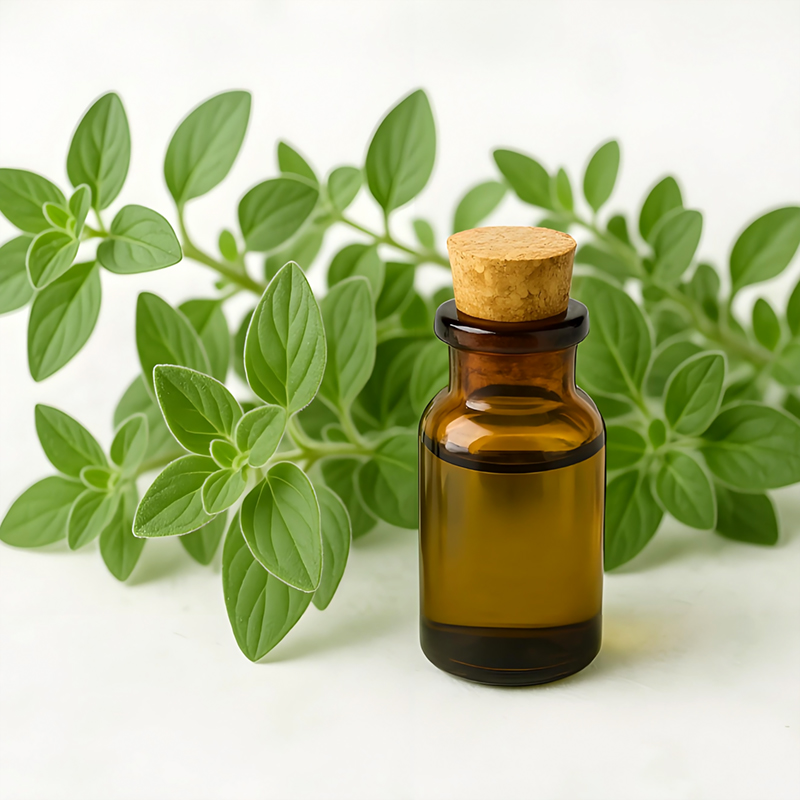
Main Benefits: Antispasmodic, anti-inflammatory, analgesic, muscle relaxation.
Applicable Symptoms: Severe spasmodic pain, lower back pain, muscle tension.
Scientific Evidence:
- Marjoram essential oil contains compounds with potent antispasmodic effects.
- A 2012 study published in "Journal of Obstetrics and Gynaecology Research" found that using lavender, clary sage, and marjoram essential oils in a 2:1:1 ratio for aromatherapy massage significantly reduces menstrual pain intensity.
Detailed Usage Methods:
- Abdominal Massage: Add 2-3 drops of marjoram essential oil to 15ml carrier oil, mix well. Use for massaging lower abdomen and lower back.
- Hot Compress: Add 2 drops of marjoram essential oil to hot water (40-45°C), soak towel, wring out, and apply to lower abdomen or waist.
5. Ginger Essential Oil
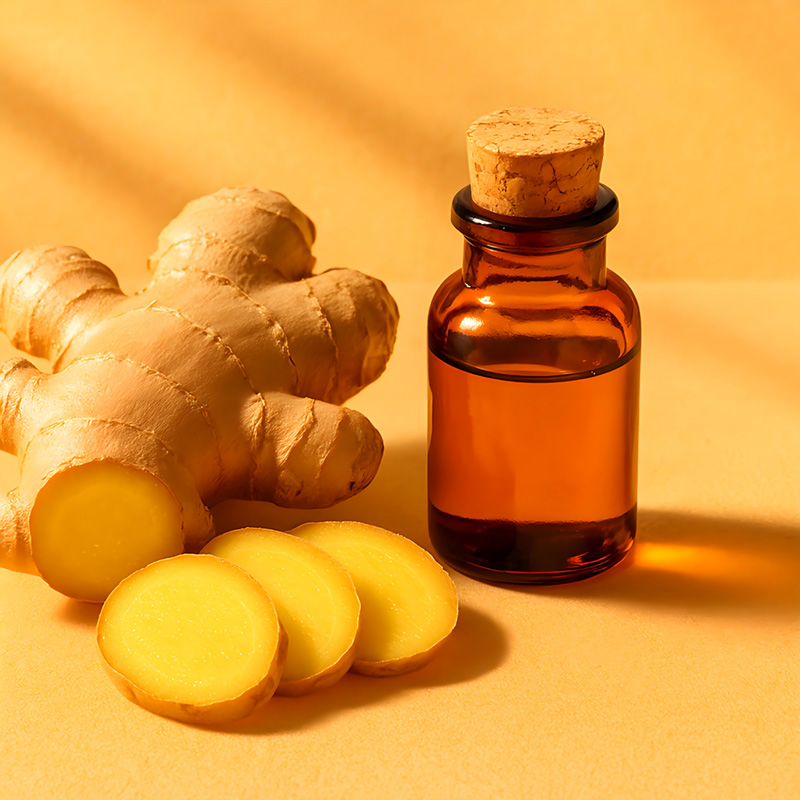
Main Benefits: Warming, promotes blood circulation, anti-inflammatory, antispasmodic.
Applicable Symptoms: Cold-type dysmenorrhea (cold abdomen), accompanied by digestive issues.
Scientific Evidence:
- Ginger and its essential oil contain gingerol and other components with significant anti-inflammatory effects, effectively reducing prostaglandin production.
- Multiple studies show that ginger essential oil can relieve menstrual pain symptoms, particularly effective for women with cold constitution.
Detailed Usage Methods:
- Diluted Massage: Add 1-2 drops of ginger essential oil to 20ml carrier oil, mix well. Use for gentle massage of lower abdomen.
- Hot Compress: Add 1 drop of ginger essential oil to hot water (40-45°C), soak towel, wring out, and apply to lower abdomen.
- Note: Ginger essential oil has strong warming sensation, requires careful dilution, use with caution on sensitive skin.
6. Roman Chamomile Essential Oil
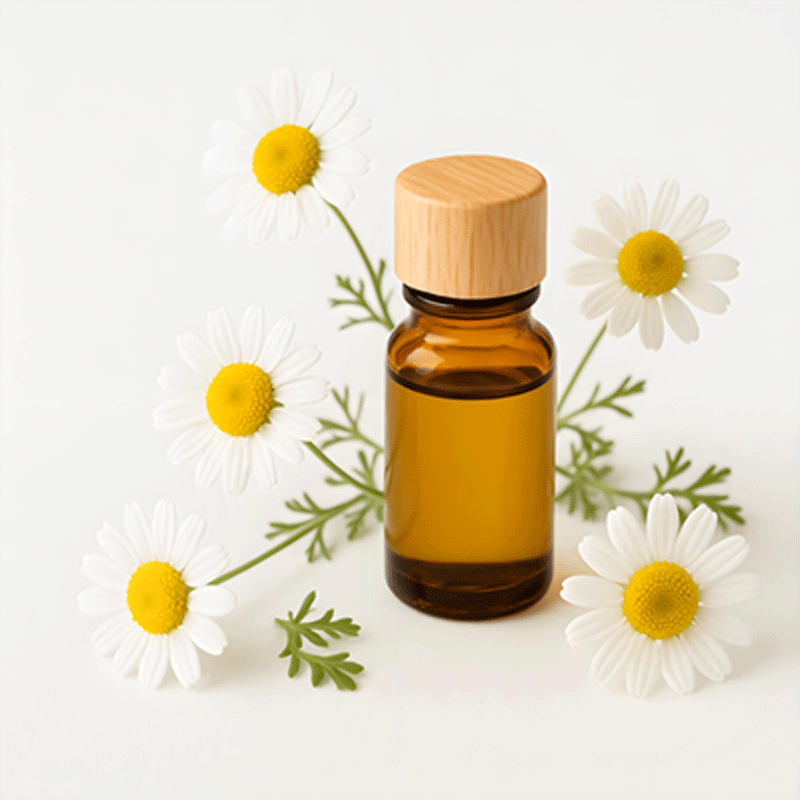
Main Benefits: Antispasmodic, anti-inflammatory, sedative, mood soothing.
Applicable Symptoms: Lower abdominal cramping, mood swings, anxiety.
Scientific Evidence:
- Flavonoid compounds in chamomile can reduce prostaglandin activity, relieve spasms, while providing sedative and soothing effects.
- Research shows that chamomile essential oil effectively relieves menstrual pain symptoms, particularly for emotionally sensitive women.
Detailed Usage Methods:
- Abdominal Massage: Add 2-3 drops of Roman chamomile essential oil to 15ml carrier oil, mix well. Use for gentle massage of lower abdomen.
- Aromatic Diffusion: Add 2-3 drops of chamomile essential oil to diffuser, inhale to help calm and soothe emotions.
- Aromatic Bath: Add 3-5 drops of chamomile essential oil mixed with carrier oil to warm bath water, soak for 15-20 minutes.
Safety Guidelines and Contraindications
Important Safety Principles
-
Skin Sensitivity Test: Before first use of any essential oil, perform a skin patch test. Apply 1-2 drops of diluted essential oil to inner wrist, observe for 24 hours.
-
Proper Dilution: Never apply pure essential oils directly to skin. Recommended dilution ratios:
- Local massage: 1-3% (4-13 drops/15ml carrier oil)
- Full body massage: 0.5-1% (2-4 drops/15ml carrier oil)
- Irritating essential oils: <1%
-
Avoid Sensitive Areas: Avoid eyes, inner ears, mucous membranes, and damaged skin areas.
Special Population Contraindications
- Pregnant and Breastfeeding Women: Use with caution under professional guidance
- Children Under 3 Years: Not recommended
- Epilepsy, Hypertension Patients: Use certain essential oils with caution
- Allergic Constitution: Must perform allergy test before use
Other Precautions
- Photosensitivity Warning: Some essential oils (mainly citrus) are photosensitive, avoid sun exposure 12-24 hours after use
- No Oral Consumption: Unless under professional aromatherapist or doctor guidance, never self-administer essential oils orally
- Storage Conditions: Essential oils should be stored in cool, dry, dark places
Frequently Asked Questions
Q: Can essential oils be taken orally?
A: Generally not recommended for self-administration as essential oils are highly concentrated and may damage digestive tract mucosa. If oral use is needed, must be under professional aromatherapist or doctor guidance.
Q: How long does it take for essential oils to relieve menstrual pain?
A: Effects vary by individual, usually relief can be felt within 15-30 minutes of use. Recommended to start 1-2 days before menstruation for better preventive effects.
Q: Can multiple essential oils be used simultaneously?
A: Yes, but recommend not exceeding 3-4 essential oils mixed, with total dilution ratio not exceeding 3%. Suggest consulting professional aromatherapist for personalized formulations.
Q: Can essential oil therapy completely replace medical treatment?
A: Essential oil therapy is an excellent complementary treatment but should not completely replace medical treatment. For severe dysmenorrhea, recommend combining with medical treatment.
Conclusion
Essential oil aromatherapy, as a natural and gentle method for menstrual pain relief, can provide effective pain relief and emotional support for women when used correctly. However, as each person's constitution and symptoms differ, it's recommended to consult professional doctors or certified aromatherapists before use to develop personalized usage plans.
Remember, essential oil therapy is a complementary treatment method. For severe or persistent menstrual pain symptoms, seek medical attention promptly for professional medical diagnosis and treatment.
Disclaimer: This content is for educational and informational purposes only and should not be considered medical advice. Please consult professional doctors or certified aromatherapists before using essential oils. Seek medical attention promptly for severe menstrual pain symptoms.
Quick Actions
⚠️ Medical Disclaimer
This content is for educational and informational purposes only and is not intended to replace professional medical advice, diagnosis, or treatment. If you have any health concerns or questions, please consult a qualified healthcare professional. Always seek the advice of your physician before making any health-related decisions.
📚 Related Articles
Continue exploring more professional health content
Anti-Inflammatory Diet: A Guide to Reducing Period Pain Through Food
Learn how adopting an anti-inflammatory diet can be a powerful strategy to reduce the severity of menstrual cramps and improve overall well-being during your period. Discover key foods to eat and those to limit.
Home Self-Care Solutions: Natural Menstrual Pain Relief Methods Effective in 5 Minutes
Natural menstrual pain relief solutions designed specifically for home environments. From 5-minute quick relief to long-term conditioning plans, including scientifically validated natural methods like heat therapy, acupressure, and nutritional care to effectively manage menstrual pain at home.
Comprehensive Guide to Natural & Physical Therapies for Menstrual Pain: 15 Scientifically Validated Relief Methods
Comprehensive introduction to 15 scientifically validated natural relief methods for menstrual pain, including heat therapy, cold therapy, massage, yoga, acupuncture, moxibustion, herbal remedies, nutritional supplements, and Ayurvedic therapies. Integrating modern science with traditional wisdom to provide personalized natural therapy selection guide.